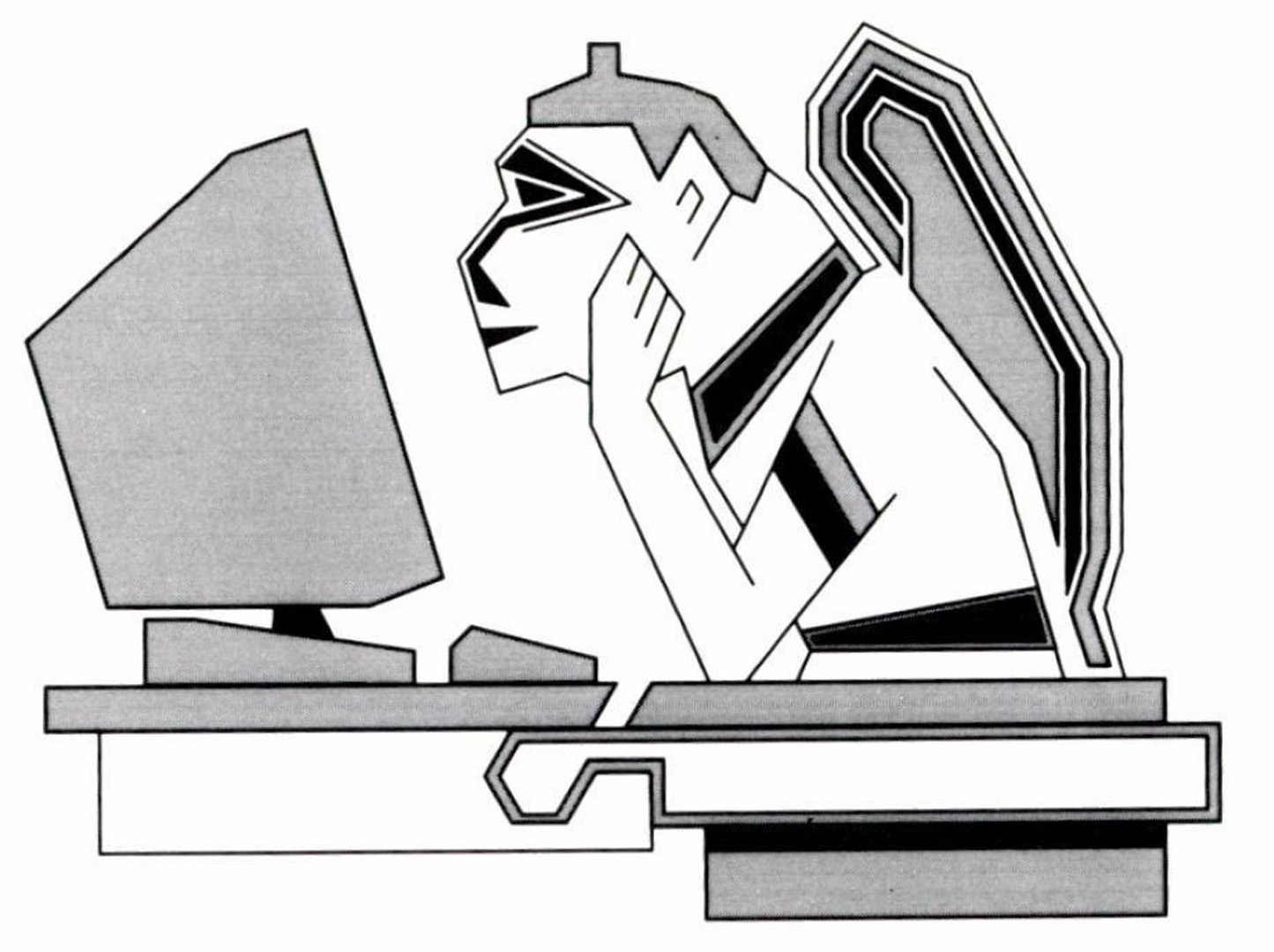“Snap-dragging” by Bier and Stone
Conference:
Type(s):
Title:
- Snap-dragging
Presenter(s)/Author(s):
Abstract:
We are interested in the problem of making precise line drawings using interactive computer graphics. In precise line drawings, specific relationships are expected to hold between points and lines. In published interactive drawing systems, precise relationships have been achieved by using rectangular grids or by solving simultaneous equations (constraints). The availability of fast display hardware and plentiful computational power suggest that we should take another look at the ruler and compass techniques traditionally used by draftsmen. Snap-dragging uses the ruler and compass metaphor to help the user place his next point with precision, and uses heuristics to automatically place guiding lines and circles that are likely to help the user construct each shape. Snap-dragging also provides translation, rotation, and scaling operations that take advantage of the precision placement capability. We show that snap-dragging compares favorably in power and ease of use with grid or constraint techniques.
References:
1. Alan Borning. Thing/ab-A ConstraintiOriented Simulation Laboratory. Revised Ph.D. thesis, Report SSL-79-3, Xerox PARC, Palo Alto. CA 94304. July }979. Also available as Stanford CS Dept. Report STAN-CS-79-746.
2. David Lance Ooines. A Constructed Roman Alphabet, David R. Oodine, publisher, 306 Dartmouth Street, Boston MA 02116. i982.
3. V. C. Lin, D. C. Oossard, and R. A, Light. Variational geometry in computer-aided design. Computer Graphics 15(3):171-177, August 1981. SIGGRAPH “81 Proceedings.
4. Daniel E, Lipkie, Steven R. Evans, John K. Newlin, and Robert U Weissman. StarGraphics: an object-oriented implementation. Computer Graphics 16(3):115-124, July 1982. SIGGRAPI-I “82 Proceedings.
5. MacDraw Manual. Apple Computer, Inc, 20525 Mariani Ave., Cupertino, CA 95014, 1984,
6. Greg Nelson. Juno. a constraint-based graphics system. Computer Graphics 19(3):235-243, July 1985. SIGGRAPH ’85 Proceedings.
7. William M. Newman and Robert F. Spr~)ull. Principles of Interactive Computer Graphics. chapter 12. McGraw Hill, second edition, 1979.
8. Mark Opperman. A Gremlin Tutorial for the SUN Workstation. Internal document, EECS Department, UC Berkeley, Berkeley CA 94720.
9. Theo Pavlidis and Christopher J. VanWyk. An automatic beautifier for drawings and illustrations. Computer Graphics 19(3):225-234. StGGRAPI-I ’85 Proceedings.
10. Kenneth A. Pier, A retrospective on the Dorado, a highperfrJrmanee personal computer. Proceedings of the }O~h Symposium on Computer Architecture. SigArch/IEEE, Stockholm. pages 252-269, June 1983.
11. David Serrano. MATHPAK: An interactive preliminary design system. Master’s thesis, MIT Mechanical Engineering Departmenl. 1984.
12. Daniel C, SwineharC Polle T. Zeltweger. and Robert B. Hagmann. The structure of Cedar, SIGPI,AN Notices 20(7):230-244, July 1985. Proceedings of the ACM SIGPLAN 85 Symposium on Language Issues in Programming Envirc~nments.
13. Maureen Stone. How to u~e Griffin. Internal Memo, Xerox PARC, 3333 Coyote Hilt Rd, Palo Alto CA 94304. 1980.
14. Ivan E. Sutherland, Sketchpad, a man-machine graphical communication system. In Herbert Freeman. editor, l’utorial and Selected Readings in Interactive Computer Graphics, pages 2-19, IEEE O~mpulcr S~~cicty, Silver Spring, MD, 1984. Reprinted from AFIPS 1963.





